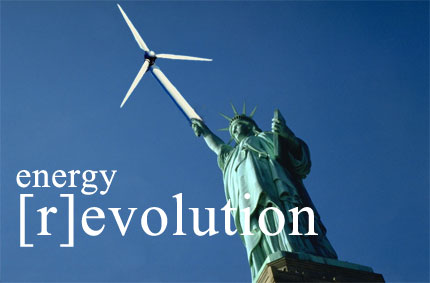 UpStart [uhp-stahrt] n. 1. A company or organization with innovative approaches to energy use, carbon pollution, resource consumption, and/or social equity, 2. A company or organization overcoming market barriers to build the new clean energy economy.
UpStart [uhp-stahrt] n. 1. A company or organization with innovative approaches to energy use, carbon pollution, resource consumption, and/or social equity, 2. A company or organization overcoming market barriers to build the new clean energy economy.by Adam James
American cities are currently facing new demands on transportation infrastructure due to a rapidly growing population. There are two ways to address this problem. One way, of course, is to build more infrastructure. The other is to more efficiently utilize what’s already in place — thus saving energy, time, and money.
Information technologies offer the key to transportation optimization. Below are three ways digital technologies are revolutionizing the way we use cars, mass transit, and cycling.
1) Reinventing HOV: Efficiently Using Cars
A quick look out the window as you sit in gridlock traffic will reveal that very few folks have someone else in the car with them. Even zipping (or in DC, crawling) down HOV lanes you will rarely see more than two people in the car. Nationwide there are now 254,212,610 registered vehicles.
What if we could fill those seats? That is the basic premise of Sidecar, a new car sharing tool that matches individuals who are seeking rides with others who need them. The service vets potential rider-givers and ride-getters to alleviate any security concerns. Interestingly, the service cannot set up formal payment; it can just suggest a donation: so the ridesharing operates with a tip-culture. With the system running on credit cards, you don’t even have to worry about bringing cash.
Information makes this possible. By gathering and sharing information about individuals travel habits and needs, SideCar enables decreasing transportation sector emissions through greater cooperation — harnessing efficiencies in our existing infrastructure.
2) Reinventing Mass Transit: Preserving Autonomy
But information technology doesn’t just enable better use of cars. A study by Latitude found:
“While users value the freedom and control a car provides, mobile information solutions could replicate this sense of autonomy without needing to own a car—primarily by helping users to make informed, in-the-moment decisions about what’s available near them and the best ways to get around.”
As a city resident myself, this makes good sense. I have the choice between driving my car, riding my bike, or taking public transportation. The big hesitation with mass transit is the lack of control or information about the journey. Navigating timetables, bus stop locations, and metro closures can sometimes be difficult if you don’t have the proper information — or patience.
But as the study shows, autonomy matters more than ownership, and information is the key to increased autonomy. Knowing where and when buses and trains are moving is a game-changer. There are a wide range of smart phone applications today that enable this kind of knowledge.
Additionally, the study found that participants who ditched their car gained a sense of community. This shows that using information to maximize efficiencies isn’t just good for maximizing financial value, it’s also good for increasing the value of relationships and community.
The emissions benefits of public transit over driving are well documented and defended, and the economics of increasing use of existing mass transportation infrastructure are simple: the marginal additional cost of adding more consumers is small, but the benefits are great.
3) Reinventing Cities: Using Cycling Data for Infrastructure Planning
Last but not least is CycleTracks, a mobile app that enables users to track their bike route using GPS and then transmit that data (confidentially) to city planners who use it to create a more bike friendly city. This data was aggregated and used to produce a model for bicycle route choice. Cyclists get to use the data to view maps and statistics of their ride, and maintain records (such as purpose of trip and difficulty). Ultimately, cyclists also get to cash in on having transportation infrastructure that is bike-friendly.
I made the case for emissions reductions from bicycling in a previous UpStarts post, but just to recap two of the highlights:
- In December the ECF published an excellent study which found that “even taking into account the production, maintenance, and fuel related to bicycle use, emissions from cycling were over 10 times lower than those stemming from the passenger car.”
- One report puts the emissions reductions potential in the United States, under a “modest” scenario of increased biking and walking infrastructure, at 33 million tons per year. Additionally, the EMBARQ program has put together a methodology that allows local and regional governments to calculate their exact emissions offsets by exploring alternative transportation options for their cities.
Adam James is a Special Assistant for Energy Policy at the Center for American Progress.




No comments:
Post a Comment